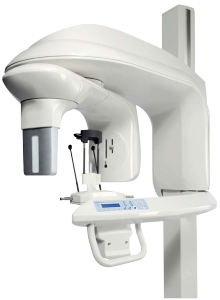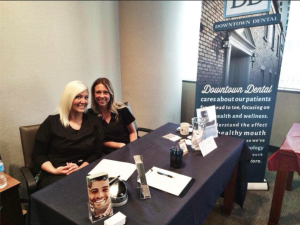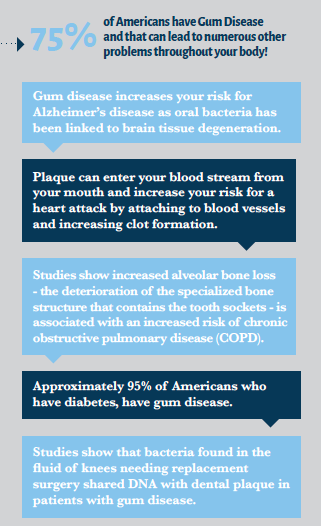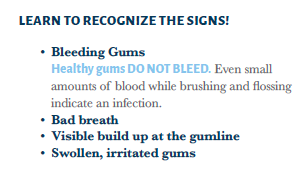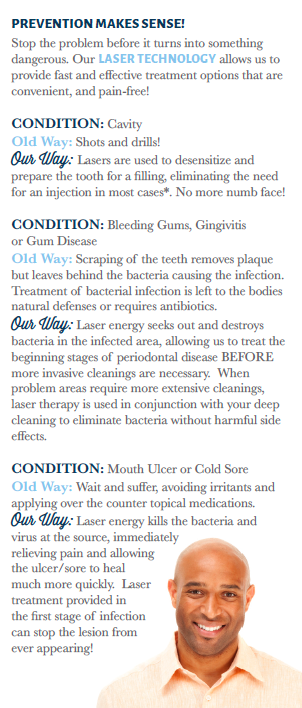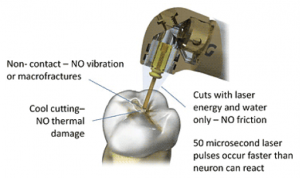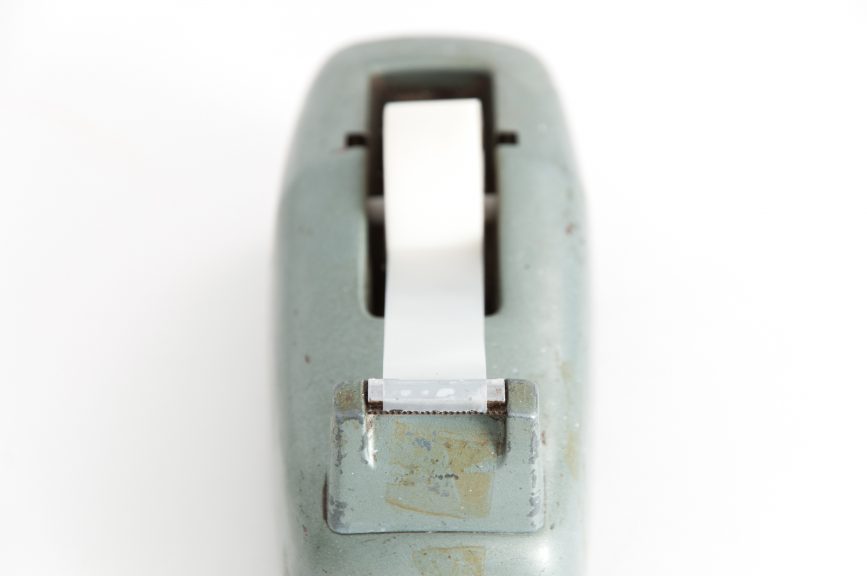
There is a weird benefit to nighttime "mouth taping" that you should know about.
If you're like most people, the idea of taping your mouth shut while you sleep might sound a little crazy and maybe even scary. But as it turns out, mouth taping might just be the key to a restful night of sleep and so much more.
Helping your body nose breathe (rather than mouth breathe) during the night accomplishes a goal you might not even know exists. It greatly increases the amount of nitric oxide circulating in your blood, which has a range of benefits.
Why nitric oxide production is so important to your health
Nitric oxide is a molecule that occurs naturally in your body and plays a bunch of important roles in your health. There are two basic ways nitric oxide gets to your blood. The first is by eating nitrate-rich foods, like nutrient-rich vegetables, and the second is through the various ways your body creates its own nitric oxide, mainly exercise and nose breathing. While you have control over your diet throughout much of your life, your body's natural ability to produce nitric oxide through exercise and nose breathing decreases as you age. That's why it's vitalto develop good nose-breathing habits as early as possible—and not allow your body to fall into bad patterns again.
Science tells us that some of the major drawbacks of decreased nitric oxide from mouth breathing include:
Worsened vascular (heart) function
High blood pressure
Drop in cognitive function
Decreased immune function
Increased inflammation
On the other hand, improving your nitric oxide intake can help to not only improve your heart function, blood pressure, cognitive function, immunity, and inflammation but also:
Athletic performance
Weight loss
Digestion
Neuropathic pain
Anxiety and depression
Are you a nighttime breather? Here are a few ways to tell:
The kicker here is that most people who mouth breathe at night don't realize it's happening.
Mouth breathing can be a silent, slow-moving detriment to your oral and overall health. No matter how much you practice nose breathing throughout the day, you could still be mouth breathing at night without knowing it.
Recognize any of these things happening to you on a regular basis? If the answer is yes, you might be a closet mouth breather:
Getting up in the middle of the night to pee
Tossing and turning through the night
Nasty breath in the morning
Snoring
Gingivitis and or bleeding gums
Signs of teeth grinding
Cavities
Drool on your pillow
If you know you have some form of sleep-disordered breathing, like sleep apnea, it's almost certain you're mouth breathing through the night. Let's talk about your sleeping and breathing patterns at your next appointment.



 It's one the most common human fears and phobias of all, particularly for those of us beyond our 20s, as we remember the sights, sounds, smells and sensations of going to the dentist in our childhood. The big needle. The high-pitched whirr and jarring vibration of the dentist's drill. The scent of antiseptic and freshly-ground cavities. Those vivid memories may trigger high anxiety and a great reluctance to return to the dentist for much-needed care.
But anyone who has visited the dentist in more recent years has been pleasantly greeted by an ever-expanding array of technologies and techniques designed to make the dental experience far less fearful and far more effective. Pain-free injections. High-precision tools that barely make a sound. Digital imaging that creates instant x-rays and high-definition templates for making crowns. Even lasers that treat cavities without drills or anesthesia.
Those technologies have made modern-day dentistry less well, like pulling teeth and more like what it should be: an easy-to-tolerate, even welcomed part of your overall health maintenance routine. Here's just a sampling of what you'll likely find at the dentist nowadays:
The Wand: One of the greatest sources of dental dread in the past was the large needle used to inject anesthesia. Most of today's dentists are using a gentle, computer-assisted device called the Wand for delivering anesthesia. Held by the dentist like a pen, the Wand slowly administers anesthesia in computer-calibrated amounts through a small needle at the tip. Many patients say they don't even feel the injection.
Digital x-rays: Remember those visits when your cheeks were stuffed with that film-strip apparatus used to take x-rays of your teeth? One section at time, you'd sit there mouth agape, draped in a lead blanket as the technician stepped out to throw the switch on huge camera aimed at your face. Today, those x-rays are captured instantly and comfortably with a hand-held sensor that processes the image onto a nearby computer screen. Radiation exposure is one-10th of what it was with the old method.
Digital impressions: You know that goop that made you gag when they took an impression of your teeth for a crown or other dental restoration? Well, it has been all but replaced by digital technology. A hand-held device fitted with a camera goes gently into the mouth and is used to capture extraordinarily high definition images of your original tooth. Those super 3D images become the template for creating exact-fit crowns, bridges and other tooth replacements.
Electric hand pieces: The often scary sounds and sensations associated with air-driven drills — the loud whine and the whirring vibrations — also are fading away. Following the lead of their European and Asian counterparts, U.S. dentists increasingly are using electric hand pieces, which are faster and more precise. They have a truer spin, a steady torque and don't slow down, stall or stop when the head of the device is applied to the tooth. They're also a lot quieter, almost inaudible when a dental air-vacuum tool also is being used.
Dental lasers: Another fast-evolving technology used in dentistry, lasers are being used for both soft-tissue and hard-tooth procedures. In some instances, they are used to prepare cavities for fillings without the use of anesthesia, as the lasers have a numbing effect themselves. Lasers are able to narrowly target the areas of the tooth structure needing treatment and also remove decay with microscopic precision. Though they haven't replaced other time-proven dental technologies, lasers are an emerging trend.
Regular dental care is an important part, not only of your oral health, but of your overall health throughout your life. That's one of the reasons why we're forever embracing new technologies and seeking ways to make the dental experience better for everyone.
It's one the most common human fears and phobias of all, particularly for those of us beyond our 20s, as we remember the sights, sounds, smells and sensations of going to the dentist in our childhood. The big needle. The high-pitched whirr and jarring vibration of the dentist's drill. The scent of antiseptic and freshly-ground cavities. Those vivid memories may trigger high anxiety and a great reluctance to return to the dentist for much-needed care.
But anyone who has visited the dentist in more recent years has been pleasantly greeted by an ever-expanding array of technologies and techniques designed to make the dental experience far less fearful and far more effective. Pain-free injections. High-precision tools that barely make a sound. Digital imaging that creates instant x-rays and high-definition templates for making crowns. Even lasers that treat cavities without drills or anesthesia.
Those technologies have made modern-day dentistry less well, like pulling teeth and more like what it should be: an easy-to-tolerate, even welcomed part of your overall health maintenance routine. Here's just a sampling of what you'll likely find at the dentist nowadays:
The Wand: One of the greatest sources of dental dread in the past was the large needle used to inject anesthesia. Most of today's dentists are using a gentle, computer-assisted device called the Wand for delivering anesthesia. Held by the dentist like a pen, the Wand slowly administers anesthesia in computer-calibrated amounts through a small needle at the tip. Many patients say they don't even feel the injection.
Digital x-rays: Remember those visits when your cheeks were stuffed with that film-strip apparatus used to take x-rays of your teeth? One section at time, you'd sit there mouth agape, draped in a lead blanket as the technician stepped out to throw the switch on huge camera aimed at your face. Today, those x-rays are captured instantly and comfortably with a hand-held sensor that processes the image onto a nearby computer screen. Radiation exposure is one-10th of what it was with the old method.
Digital impressions: You know that goop that made you gag when they took an impression of your teeth for a crown or other dental restoration? Well, it has been all but replaced by digital technology. A hand-held device fitted with a camera goes gently into the mouth and is used to capture extraordinarily high definition images of your original tooth. Those super 3D images become the template for creating exact-fit crowns, bridges and other tooth replacements.
Electric hand pieces: The often scary sounds and sensations associated with air-driven drills — the loud whine and the whirring vibrations — also are fading away. Following the lead of their European and Asian counterparts, U.S. dentists increasingly are using electric hand pieces, which are faster and more precise. They have a truer spin, a steady torque and don't slow down, stall or stop when the head of the device is applied to the tooth. They're also a lot quieter, almost inaudible when a dental air-vacuum tool also is being used.
Dental lasers: Another fast-evolving technology used in dentistry, lasers are being used for both soft-tissue and hard-tooth procedures. In some instances, they are used to prepare cavities for fillings without the use of anesthesia, as the lasers have a numbing effect themselves. Lasers are able to narrowly target the areas of the tooth structure needing treatment and also remove decay with microscopic precision. Though they haven't replaced other time-proven dental technologies, lasers are an emerging trend.
Regular dental care is an important part, not only of your oral health, but of your overall health throughout your life. That's one of the reasons why we're forever embracing new technologies and seeking ways to make the dental experience better for everyone.
 It has been estimated that as many as half of all Americans snore at least some of the time. Nearly everyone considers “snoring” to be a nuisance, but in many cases it is not considered to be a significant health risk. However, it may prevent the snorer or others sharing the bedroom from getting a good night’s sleep.
The cause of snoring is well understood. When we fall asleep, the soft tissues of our throat, mouth and nose relax. In some individuals, this may partially restrict the flow of air. Breathing through the narrowed air passages causes the relaxed tissues to vibrate, which is the sound we hear. The more narrowed the air passage, the more difficult it becomes to breathe and the louder the snoring.
Snoring tends to be more common as we age and may be worsened by certain anatomic conditions, such as being overweight, a large tongue or tonsils, and even a deviated nasal septum. It may also be affected by lifestyle choices, such as smoking and alcohol consumption. However about half of all snorers have a much more serious condition called “Obstructive Sleep Apnea” or “OSA.” In addition to snoring, people with sleep apnea have altered breathing patterns which can range from very shallow breathing to gasping, choking or even pauses that can last for a few seconds to a minute or more. This makes it very difficult to get enough air and lowers the amount of oxygen reaching their brain.
OSA sufferers may find it difficult to reach or maintain deeper levels of sleep and may even waken briefly hundreds of times a night as they struggle to catch their breath. Sleep apnea can lead to daytime drowsiness, inability to concentrate, fatigue, irritability and other minor disturbances. However, it may also cause much more serious medical conditions, such as diabetes, glaucoma, high blood pressure, heart attack and even strokes. It is important to understand that not every snorer has OSA. But anyone with OSA almost always has loud and frequent snoring. To tell the difference requires a sleep study where the individual has his or her breathing carefully monitored over the course of a night. The sleep study must be ordered and your condition diagnosed by your medical doctor.
Treatment of snoring and OSA can be as simple as quitting smoking, losing some weight, changing the position you sleep in, wearing adhesive nasal strips that open the nasal passages or reducing the amount of alcohol you consume. For more severe cases of OSA, a CPAP (Continuous Positive Airway Pressure) machine may be prescribed by your medical doctor. This device forces air into the lungs through tubes that fit into the nose or a mask placed over the nose and mouth while you sleep. The constant air pressure forces open the collapsed tissues and allows for normal breathing. While it is very effective, some sleep apnea patients experience difficulty using a CPAP machine, as it can be uncomfortable, embarrassing or inconvenient. Fortunately, a visit to the dentist may be your answer to a good night’s sleep.
[caption id="attachment_1553" align="aligncenter" width="678"]
It has been estimated that as many as half of all Americans snore at least some of the time. Nearly everyone considers “snoring” to be a nuisance, but in many cases it is not considered to be a significant health risk. However, it may prevent the snorer or others sharing the bedroom from getting a good night’s sleep.
The cause of snoring is well understood. When we fall asleep, the soft tissues of our throat, mouth and nose relax. In some individuals, this may partially restrict the flow of air. Breathing through the narrowed air passages causes the relaxed tissues to vibrate, which is the sound we hear. The more narrowed the air passage, the more difficult it becomes to breathe and the louder the snoring.
Snoring tends to be more common as we age and may be worsened by certain anatomic conditions, such as being overweight, a large tongue or tonsils, and even a deviated nasal septum. It may also be affected by lifestyle choices, such as smoking and alcohol consumption. However about half of all snorers have a much more serious condition called “Obstructive Sleep Apnea” or “OSA.” In addition to snoring, people with sleep apnea have altered breathing patterns which can range from very shallow breathing to gasping, choking or even pauses that can last for a few seconds to a minute or more. This makes it very difficult to get enough air and lowers the amount of oxygen reaching their brain.
OSA sufferers may find it difficult to reach or maintain deeper levels of sleep and may even waken briefly hundreds of times a night as they struggle to catch their breath. Sleep apnea can lead to daytime drowsiness, inability to concentrate, fatigue, irritability and other minor disturbances. However, it may also cause much more serious medical conditions, such as diabetes, glaucoma, high blood pressure, heart attack and even strokes. It is important to understand that not every snorer has OSA. But anyone with OSA almost always has loud and frequent snoring. To tell the difference requires a sleep study where the individual has his or her breathing carefully monitored over the course of a night. The sleep study must be ordered and your condition diagnosed by your medical doctor.
Treatment of snoring and OSA can be as simple as quitting smoking, losing some weight, changing the position you sleep in, wearing adhesive nasal strips that open the nasal passages or reducing the amount of alcohol you consume. For more severe cases of OSA, a CPAP (Continuous Positive Airway Pressure) machine may be prescribed by your medical doctor. This device forces air into the lungs through tubes that fit into the nose or a mask placed over the nose and mouth while you sleep. The constant air pressure forces open the collapsed tissues and allows for normal breathing. While it is very effective, some sleep apnea patients experience difficulty using a CPAP machine, as it can be uncomfortable, embarrassing or inconvenient. Fortunately, a visit to the dentist may be your answer to a good night’s sleep.
[caption id="attachment_1553" align="aligncenter" width="678"]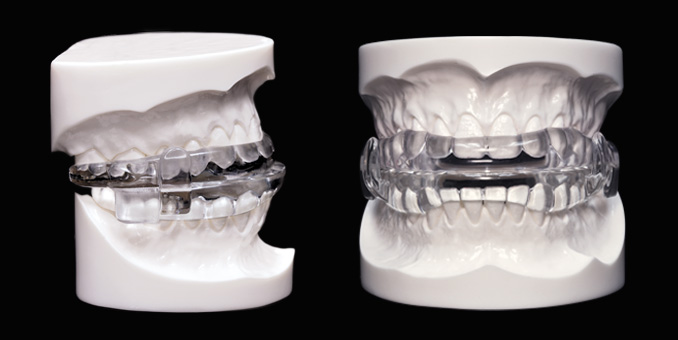 The MicrO2 Sleep Apnea Device (image via microdental.com)[/caption]
Research has shown that simple snoring and mild to moderate OSA may be successfully managed with an oral appliance that repositions the lower jaw and helps open the airway. The oral appliance is worn in the mouth while you sleep and fits like a sports mouth guard or an orthodontic retainer. Many patients consider these dental appliances to be more comfortable to wear than a CPAP mask. They are also quiet, portable and easy to care for. If you and your doctor decide that oral appliance therapy is the best treatment option, he or she will write a prescription for a sleep apnea appliance and refer you to a dentist trained in sleep medicine. Even more good news — oral appliance therapy is also covered by many medical insurance plans.
For those that cannot be treated with either CPAP or an oral appliance, there are surgical options. To open the airway, some tissue from the soft palate, tonsils and adenoids may be removed. This is normally done by an ear, nose and throat specialist, or an oral surgeon. Another way to open the airway surgically would be to reposition the jaws in a more forward position. This would require an oral surgeon and possibly an orthodontist. Surgical options should, of course, be reserved as a last resort.
The MicrO2 Sleep Apnea Device (image via microdental.com)[/caption]
Research has shown that simple snoring and mild to moderate OSA may be successfully managed with an oral appliance that repositions the lower jaw and helps open the airway. The oral appliance is worn in the mouth while you sleep and fits like a sports mouth guard or an orthodontic retainer. Many patients consider these dental appliances to be more comfortable to wear than a CPAP mask. They are also quiet, portable and easy to care for. If you and your doctor decide that oral appliance therapy is the best treatment option, he or she will write a prescription for a sleep apnea appliance and refer you to a dentist trained in sleep medicine. Even more good news — oral appliance therapy is also covered by many medical insurance plans.
For those that cannot be treated with either CPAP or an oral appliance, there are surgical options. To open the airway, some tissue from the soft palate, tonsils and adenoids may be removed. This is normally done by an ear, nose and throat specialist, or an oral surgeon. Another way to open the airway surgically would be to reposition the jaws in a more forward position. This would require an oral surgeon and possibly an orthodontist. Surgical options should, of course, be reserved as a last resort.
